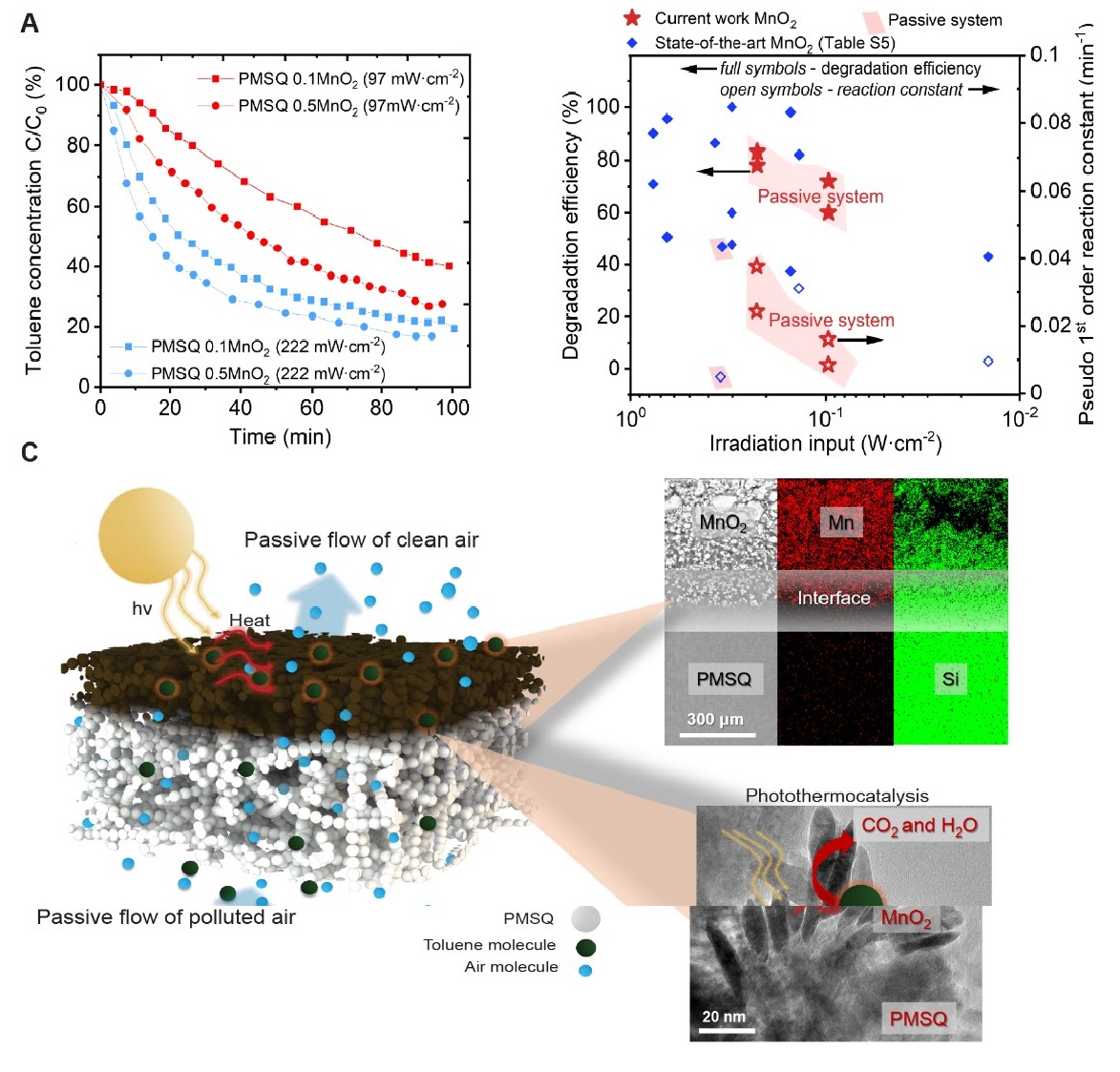Biomimetic Light-Driven Aerogel Passive Pump
Biomimetic Light-Driven Aerogel Passive Pump for Volatile Organic Pollutant Removal
Passive gas transport, i.e. thermal transpiration, exists in aquatic plants, where it occurs under solar irradiation owing to the unique pore structure of young leaves. Upon irradiation, the temperature gradient induced on the pores initiates the flux of air from the atmosphere to supply oxygen to the root system. Inspired by the solar-light-driven oxygen transportation in aquatic plants, we developed a biomimetic sustainable light-driven aerogel pump with a surface layer containing black manganese oxide (MnO2) as an optical absorber (Drdova, S.; Zhao, S.; Giannakou, M.; Sivaraman, D.; Guerrero-Alburquerque, N.; Koebel, M.M.; Pauer, R.; Billeter, E.; Siqueira, G.; Bonnin, A.; Pan, Z.; Zeng, Z.; Malfait, W.J.; Wang, J. (2022) Biomimetic Light-Driven Aerogel Passive Pump for Volatile Organic Pollutant Removal. Advanced Science, external pagehttps://doi.org/10.1002/advs.202105819call_made ).

The flow intensity of the pumped air is controlled by the pore structure of nanofilbrillated cellulose (NFC), urea-modified chitosan (UMCh), or polymethylsilsesquioxane (PMSQ) aerogels. The MnO2 induced photo-thermal conversion drives both the passive gas flow and the catalytic degradation of volatile organic pollutants. All investigated aerogels demonstrated superior pumping compared to benchmarked Knudsen pump systems, but the inorganic PMSQ aerogels provided the highest flexibility in terms of the input power and photo-thermal degradation activity. Aerogel light-driven multi-functional gas pumps offer a broad future application potential for gas sensing devices, air-quality mapping, and air quality control systems.
